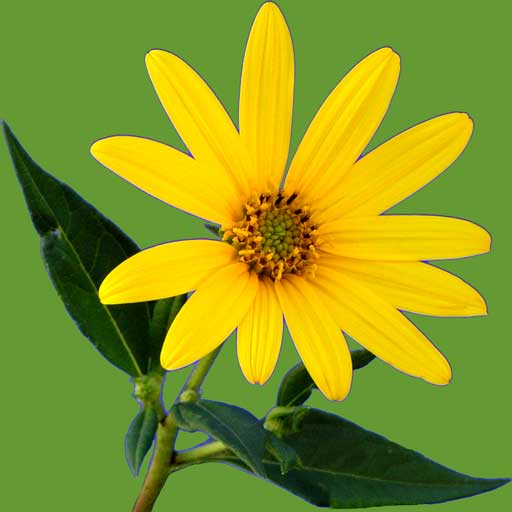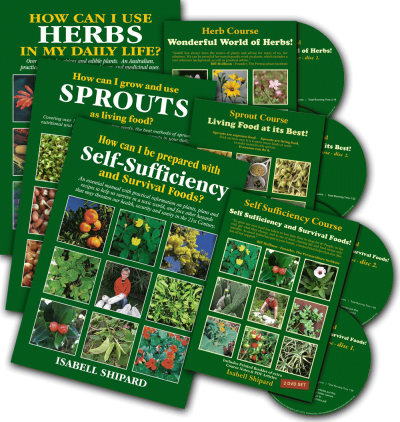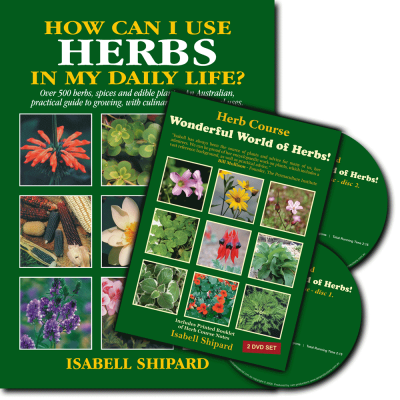Chapters in “How can I use HERBS in my daily life?” are set out in the following manner :
(e.g. taken from COMFREY unless otherwise stated)
Heading
(Name of herb or plant grouping.)
e.g. COMFREY
Other Common Names
(Names used from different countries and cultures.)
e.g. Knitbone, Woundwort, Healherb, Gum Plant, All Heal
Botanical Name
(F. = family)
e.g. Symphytum officinale F. Boraginaceae
(syn. = old botanical name; any capital letter followed by a full stop = repeat of the previous name starting with the same capital letter; F. = family)
e.g. Canna edulis syn. C. esculenta, C. achiras, C. rubricaulis F. Cannaceae (taken from ARROWROOT)
Description
(covering plant origin; appearance of the plant, flowers and seeds; growing conditions; and seed saving)
e.g. Plant origin, Asia and Europe; a perennial growing from a thick, fleshy, brown-skinned root system, that can delve deeply into the sub-soil in search of moisture and minerals. Oblonglanceolate, dark green leaves, 50-120cm long, with long, round-grooved, petiole stems…
Constituents
(some of the known properties of the plant)
e.g. allantoin, pyrrolizidine and symphtocynoglossine alkaloids, mucilage, choline, tannins, saponins, asparagine, inulin, resins, phenolic acids include rosmarinic and caffeic, protein
Vitamins
(the naturally produced, vital, life-giving compounds essential to health as found in the herb)
e.g. A (28,000 IU per 100g), B1, B2, B3, B5, B6, B12, C, E
Minerals
(includes natural, essential minerals in the plant and trace minerals)
e.g. calcium, phosphorus, potassium, chromium, cobalt, copper, magnesium, iron, manganese, sodium, boron, lead, sulphur, molybdenum, zinc
Actions
(therapeutic functions)
e.g. vulnerary, astringent, expectorant, emollient, demulcent, antiseptic, pectoral, nutritive, tonic, alterative, styptic, homeostatic, antioxidant
Medicinal Uses
(historical and folklore uses; scientific research and studies; medicinal, remedial and curative uses of the plant; ailments and diseases that the plant has been used for prevention and healing; natural herbal remedies; alternative herbal medicines; natural herbal pain relief; herbal nutrition)
e.g. Recorded history tells of comfrey’s use, since ancient times, for healing. Dioscorides, author of one of the oldest herbal texts, ‘Materia Medica’ of 50 AD, prescribed the plant to heal wounds and broken bones
… … see How can I use HERBS in my daily life? for full text.
Comfrey Cream
To make an ointment to use externally, take 1 cup of finely cut comfrey root and simmer in 1 cup of olive oil until it starts to soften. Cool and strain. Add 50g of beeswax (usually available from
… … see How can I use HERBS in my daily life? for full text.
Culinary Uses
(how to prepare and cook using the herb; recipes)
e.g. …Comfrey fritters can make an economical, nutritious and quick meal. Make a batter, with egg, milk and flour, and add finely chopped comfrey leaves (omit the thick stem as it takes longer to cook). Season with salt and pepper and, if desired, onions, garlic or other herbs, to flavour. Place tablespoonfull amounts in an oiled fry pan and brown both sides…
Other Uses
(arts and crafts; companion planting; uses for animals)
e.g. Blossom bouquet fits in the arts and crafts category, as well as having utilitarian uses. As the flowers hold their petals after flowering, they have potential for use in floral artwork, and with crafts for decorating boxes, gifts, hats and cards. (taken from BLOSSOM BOUQUET)


